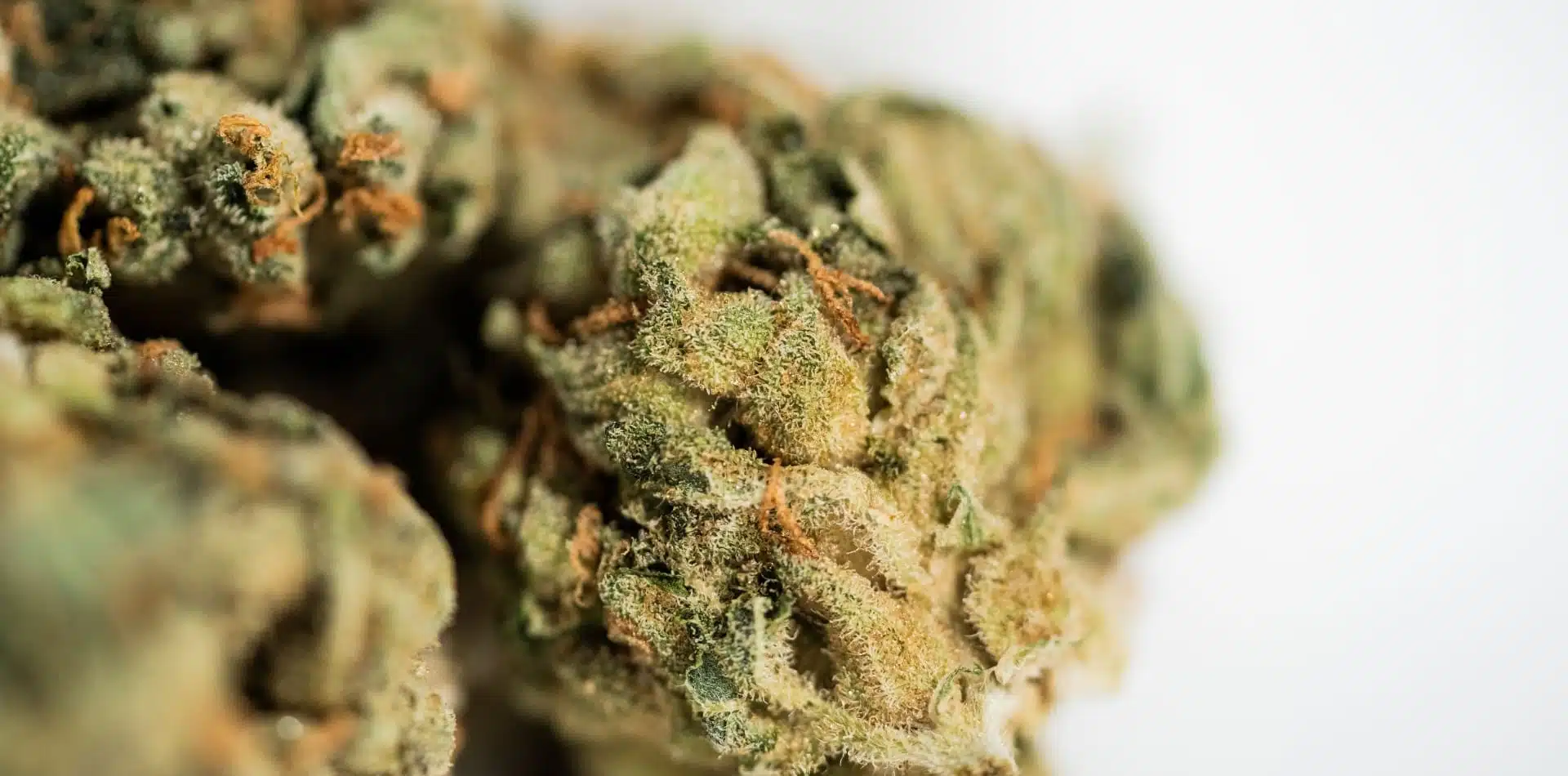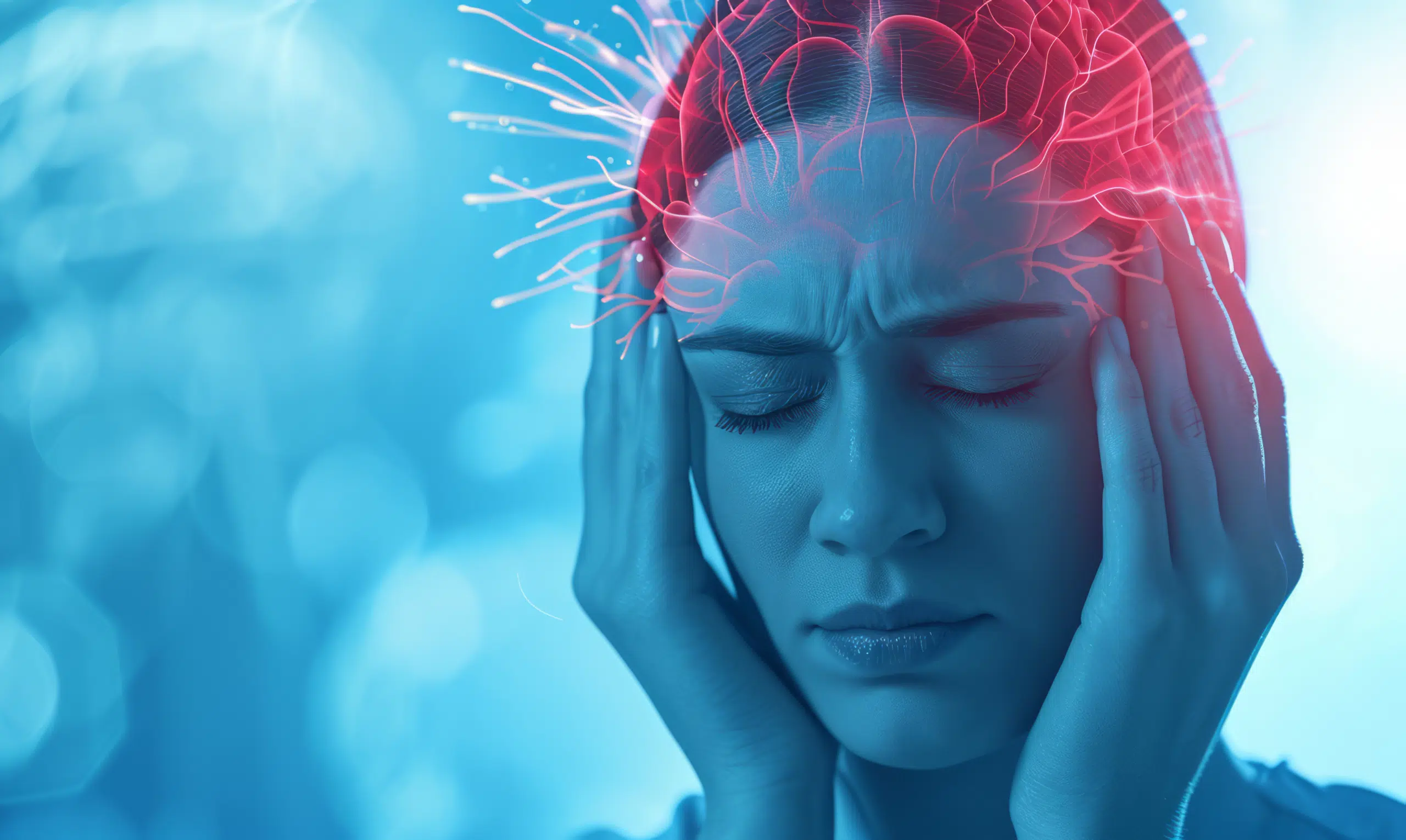Share
Demystifying THC: How Tetrahydrocannabinol Works in the Body
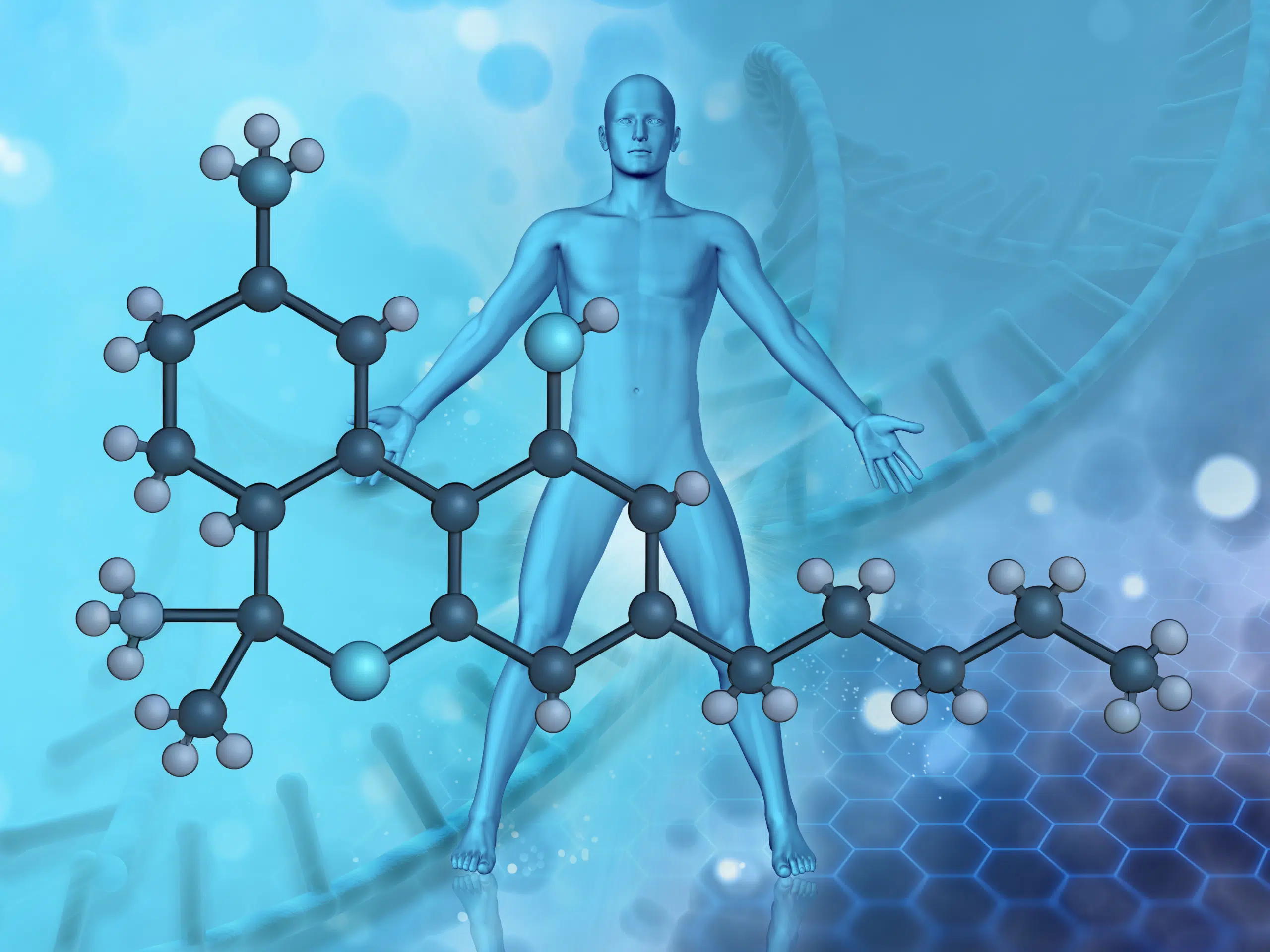
Tetrahydrocannabinol (THC) is the principal psychoactive component of cannabis, responsible for its mind-altering effects. However, THC’s interaction with the body’s endocannabinoid system and its broader physiological effects go beyond mere intoxication.
Let’s better understand the science behind THC and explore its mechanisms of action, pharmacokinetics, therapeutic potential, and more.
Interaction with the Endocannabinoid System
The interaction between tetrahydrocannabinol (THC) and the endocannabinoid system (ECS) is a fundamental aspect of understanding the effects of cannabis on the human body. THC, the primary psychoactive compound in cannabis, exerts its effects primarily by interacting with the ECS, a complex network of receptors and neurotransmitters involved in regulating various physiological processes. Through its interaction with cannabinoid receptors, particularly CB1 and CB2, THC can modulate neurotransmitter release, influence synaptic signaling, and ultimately produce its characteristic psychoactive and therapeutic effects. Understanding how THC engages with the ECS provides insights into the mechanisms underlying its outcomes on mood, cognition, pain perception, appetite, and other physiological functions, paving the way for potential therapeutic applications and informed cannabis use.
The ECS comprises cannabinoid receptors (CB1 and CB2), endocannabinoids (anandamide, 2-AG), and enzymes responsible for synthesizing and degrading these molecules. THC interacts primarily with CB1 receptors in the brain, mimicking the effects of endogenous cannabinoids like anandamide. This interaction alters neurotransmitter release, affecting mood, perception, and memory.
Studies suggest that THC’s activation of CB1 receptors is responsible for its psychoactive effects, such as euphoria and altered sensory perception. Additionally, THC’s interaction with CB2 receptors in peripheral tissues modulates immune responses and inflammation, indicating potential therapeutic benefits beyond its psychoactivity.
Mechanisms of Action of THC
THC exerts its effects by binding to CB1 receptors on presynaptic neurons, inhibiting the release of neurotransmitters like gamma-aminobutyric acid (GABA) and glutamate. This disruption in neurotransmitter signaling contributes to THC’s psychoactive properties, including relaxation and altered perception.
Moreover, THC indirectly influences other neurotransmitter systems, such as dopamine and serotonin pathways, which may underlie its diverse physiological effects and potential therapeutic applications.
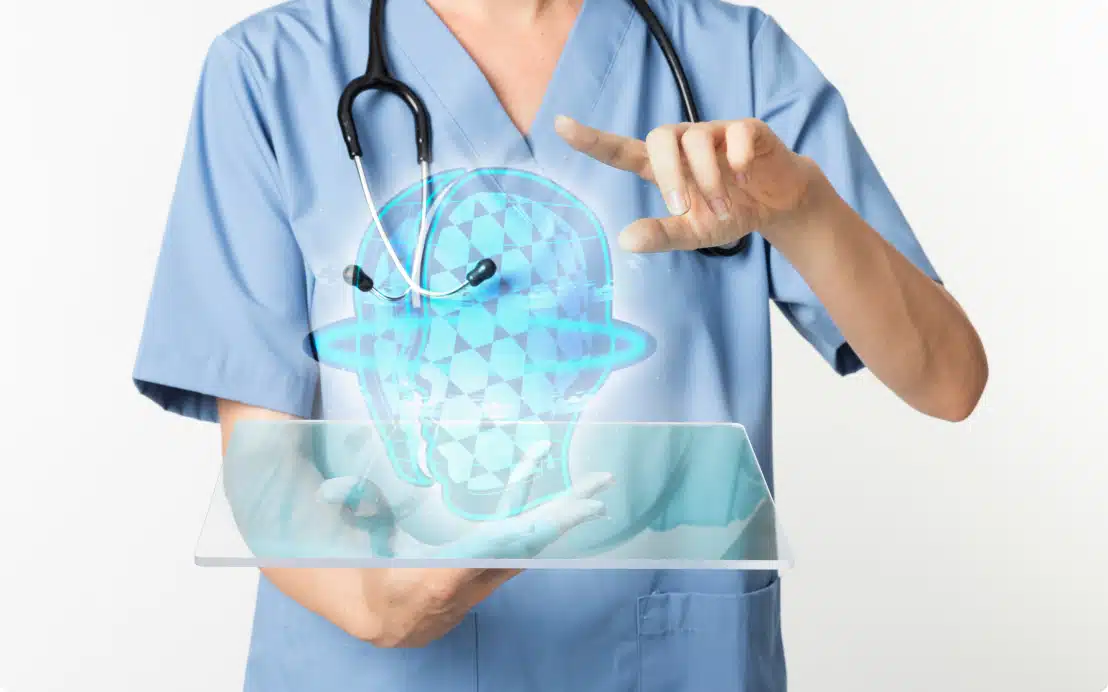
Physiological Effects of THC
Tetrahydrocannabinol is a natural compound found in cannabis plants that affects the body in different ways. When you consume THC, it interacts with a system in your body called the endocannabinoid system, which helps regulate various functions like mood, appetite, and pain sensation.
THC mainly binds to special receptors in your body called CB1 and CB2 receptors. These receptors are found throughout your body, for instance, in your brain and immune system. When THC binds to these receptors, it can produce a variety of effects, depending on factors like how much you consume and how your body responds.
One of the most well-known effects of THC is the feeling of being “high” or euphoric. It can also change how you perceive things, like making colors seem brighter or altering your sense of time. Some people feel relaxed and happy after using THC, while others may feel anxious or paranoid, especially if they use too much.
THC can also affect your thinking and coordination. It can also temporarily increase your heart rate and blood pressure, which might be concerning for people with heart conditions.
However, it’s essential to be cautious when using THC, as it can have side effects, especially if used in large amounts or for a long time. Some people may experience anxiety, paranoia, or even psychosis, particularly if they have a history of mental health issues. It can also affect your memory and concentration, so it’s important to use it responsibly.
Generally, THC has both potential benefits and risks, and it’s essential to weigh these factors carefully before using it. If you’re considering using THC for medical purposes, it’s a good idea to talk to your healthcare provider first to understand how it might affect you and whether it’s the right option for your needs.
Pharmacokinetics of THC
THC is rapidly absorbed into the bloodstream when smoked or ingested orally. Peak plasma concentrations occur within minutes to hours, depending on the route of administration. THC undergoes extensive metabolism in the liver, primarily into 11-hydroxy-THC and THC-COOH, which are less psychoactive but contribute to THC’s overall pharmacological effects.
Inhaling cannabinoids leads to higher levels in your blood compared to swallowing them. The amount your body absorbs can vary from person to person, depending on how you inhale, the device you use, and where the particles end up in your lungs.
Most people smoke cannabis to get cannabinoids into their system. People who smoke often tend to absorb more THC than occasional smokers because they’re more efficient at smoking. However, using a vaporizer instead of smoking can be safer because you avoid inhaling harmful substances produced by burning cannabis. Vaporized and smoked cannabinoids have similar effects on the body.
Inhaling or taking cannabinoids by mouth can be better than swallowing them because they don’t have to go through your liver first. This means you might feel relief from symptoms faster.
THC and CBD don’t absorb well when you swallow them, with as little as 6% getting into your bloodstream. Oral THC can take about 2 hours to reach its highest level in your blood, while oral CBD behaves similarly. These forms might be better if you need long-lasting relief.
The majority of THC and its metabolites are eliminated through urine, with a smaller proportion excreted in feces. Factors influencing THC’s pharmacokinetics include individual metabolism, frequency of use, and interactions with other substances.
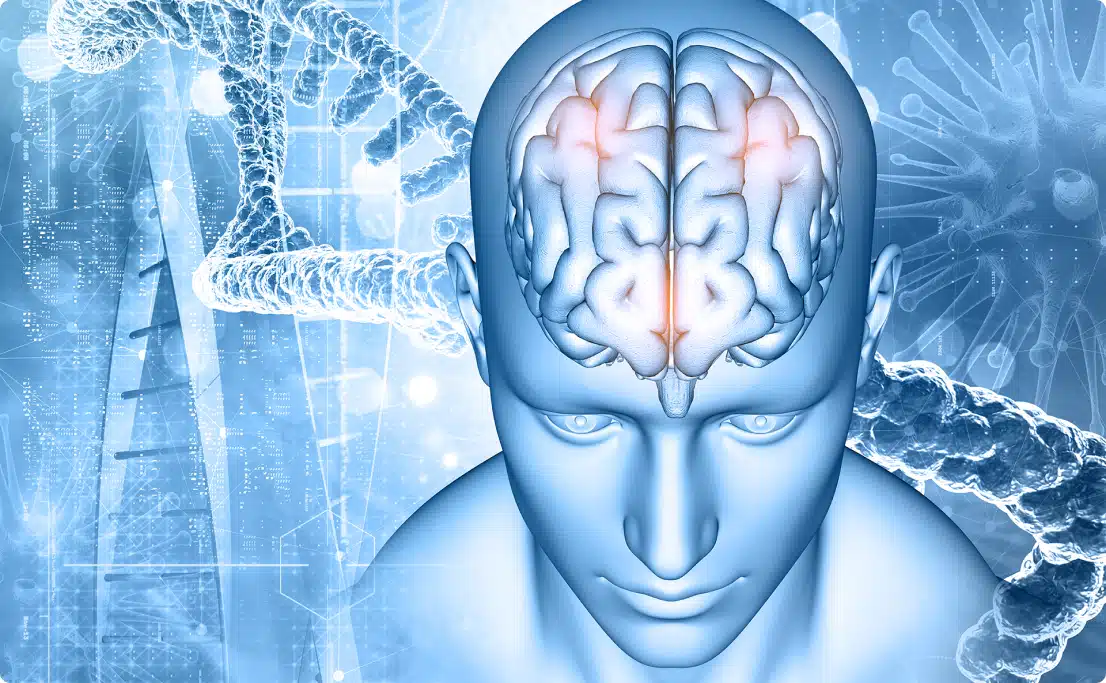
Therapeutic Potential and Clinical Applications
THC’s therapeutic potential extends beyond recreational use. Clinical studies have investigated its efficacy in managing chronic pain, chemotherapy-induced nausea and vomiting, and symptoms associated with multiple sclerosis and epilepsy.
In addition to its analgesic properties, THC has demonstrated efficacy as an antiemetic or anti-nausea medication. This makes it a valuable option for patients undergoing chemotherapy or experiencing nausea and vomiting due to other medical treatments or conditions. THC’s ability to suppress nausea and vomiting is thought to be mediated through its interaction with cannabinoid receptors in the brainstem, which regulate the body’s emetic response.
Delta-9-tetrahydrocannabinol has also shown promise as an appetite stimulant, especially in individuals with diseases like HIV/AIDS or cancer cachexia, where loss of appetite and wasting syndrome are common complications. By activating cannabinoid receptors in the brain’s hypothalamus, THC can enhance appetite and promote weight gain in patients who struggle to maintain normal nutrition.
Beyond its symptomatic relief properties, THC has neuroprotective and anti-inflammatory effects, suggesting potential applications in the treatment of neurodegenerative diseases such as Alzheimer’s disease, Parkinson’s disease, and multiple sclerosis. Preclinical studies have demonstrated that THC can reduce inflammation, oxidative stress, and neuronal damage in animal models of these conditions, paving the way for further investigation into its therapeutic potential for human patients.
Despite its therapeutic potential, the clinical use of THC has many challenges. Concerns about the psychoactive effects, potential for dependence, and adverse effects such as cognitive impairment and psychosis must be carefully considered when prescribing THC-containing medications. Combining THC with non-psychoactive cannabinoids like cannabidiol may enhance therapeutic outcomes and expand treatment options.
Additionally, legal and regulatory barriers can limit access to medical cannabis products containing THC in many regions, posing difficulties for patient care and research.
While further research is needed to fully understand its mechanisms of action and optimize its clinical use, THC represents a valuable addition to the armamentarium of treatments available to healthcare providers and patients alike. With careful consideration of their risks and benefits, THC-based therapies have the potential to improve outcomes and quality of life for individuals living with various medical conditions.
Conclusion
THC’s interaction with the ECS and its diverse physiological effects underscore its potential as a therapeutic agent. Research into THC’s mechanisms of action, pharmacokinetics, and clinical applications continues to evolve, shaping our understanding of cannabis-based therapies. By unraveling the complexities of THC, we pave the way for innovative treatments that leverage its medicinal properties while mitigating its psychoactive effects.
Several factors that are unique to each patient can affect how cannabinoids are processed in the body. These factors include a person’s history of cannabis use, their genetic makeup, body size, health conditions, diet, gut bacteria, and other unknown factors.
There is limited information about how safe and effective cannabis use is for older individuals. While cannabis might help manage symptoms and provide comfort for older people, they also face risks due to other health conditions, taking multiple medications, and potential cognitive issues. Older adults may experience stronger side effects like drowsiness, which can increase the risk of falls. Age-related changes in the body, such as slower liver and kidney function and higher body fat, can also affect how cannabis is absorbed and how long it stays in the body.
We have limited knowledge about how different cannabis products affect the body and how they vary from person to person. It is important to be cautious when comparing different products and ways of taking cannabis. The product’s choice should be based on what works best for each individual.
Sources:
Hansen JS, Boix F, Hasselstrøm JB, et al. Pharmacokinetics and pharmacodynamics of cannabis-based medicine in a patient population included in a randomized, placebo-controlled, clinical trial. Clin Transl Sci. 2024; 17:e13685. doi:10.1111/cts.13685
Chayasirisobhon S. Mechanisms of Action and Pharmacokinetics of Cannabis. Perm J. 2020 Dec;25:1-3. doi: 10.7812/TPP/19.200. PMID: 33635755; PMCID: PMC8803256.
Sharma P, Murthy P, Bharath MM. Chemistry, metabolism, and toxicology of cannabis: clinical implications. Iran J Psychiatry. 2012 Fall;7(4):149-56. PMID: 23408483; PMCID: PMC3570572.175
Araújo M, Almeida MB, Araújo LLN. The cannabinoids mechanism of action: an overview BrJP. São Paulo. 2023;6(Suppl 2):S109-13 doi:10.5935/2595-0118.20230028-en
Lu HC, Mackie K. Review of the Endocannabinoid System. Biol Psychiatry Cogn Neurosci Neuroimaging. 2021 Jun;6(6):607-615. doi: 10.1016/j.bpsc.2020.07.016. Epub 2020 Aug 1. PMID: 32980261; PMCID: PMC7855189.



